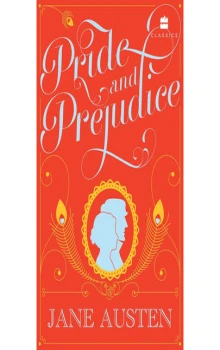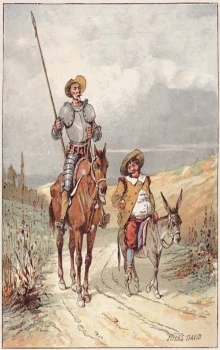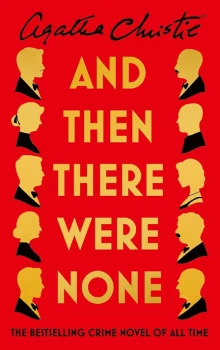Despite her monumental reputation, the Mona Lisa was a mere thirty-one inches by
twenty-one inches—smaller even than the posters of her sold in the Louvre gift shop.
She hung on the northwest wall of the Salle des Etats behind a two-inch-thick pane of
protective Plexiglas. Painted on a poplar wood panel, her ethereal, mist-filled atmosphere
was attributed to Da Vinci's mastery of the sfumato style, in which forms appear to
evaporate into one another.
Since taking up residence in the Louvre, the Mona Lisa—or La Jaconde as they call
her in France—had been stolen twice, most recently in 1911, when she disappeared from
the Louvre's “salle impénétrable”—Le Salon Carré. Parisians wept in the streets and
wrote newspaper articles begging the thieves for the painting's return. Two years later,
the Mona Lisa was discovered hidden in the false bottom of a trunk in a Florence hotel
room.
Langdon, now having made it clear to Sophie that he had no intention of leaving,
moved with her across the Salle des Etats. The Mona Lisa was still twenty yards ahead
when Sophie turned on the black light, and the bluish crescent of penlight fanned out on
the floor in front of them. She swung the beam back and forth across the floor like a
minesweeper, searching for any hint of luminescent ink.
Walking beside her, Langdon was already feeling the tingle of anticipation that
accompanied his face-to-face reunions with great works of art. He strained to see beyond
the cocoon of purplish light emanating from the black light in Sophie's hand. To the left,
the room's octagonal viewing divan emerged, looking like a dark island on the empty sea
of parquet.
Langdon could now begin to see the panel of dark glass on the wall. Behind it, he
knew, in the confines of her own private cell, hung the most celebrated painting in the
world.
The Mona Lisa's status as the most famous piece of art in the world, Langdon knew,
had nothing to do with her enigmatic smile. Nor was it due to the mysterious
interpretations attributed her by many art historians and conspiracy buffs. Quite simply,
the Mona Lisa was famous because Leonardo da Vinci claimed she was his finest
accomplishment. He carried the painting with him whenever he traveled and, if asked
why, would reply that he found it hard to part with his most sublime expression of
female beauty.
Even so, many art historians suspected Da Vinci's reverence for the Mona Lisa had
nothing to do with its artistic mastery. In actuality, the painting was a surprisingly
ordinary sfumato portrait. Da Vinci's veneration for this work, many claimed, stemmed
from something far deeper: a hidden message in the layers of paint. The Mona Lisa was,
in fact, one of the world's most documented inside jokes. The painting's well-documented
collage of double entendres and playful allusions had been revealed in most art history
tomes, and yet, incredibly, the public at large still considered her smile a great mystery.
No mystery at all, Langdon thought, moving forward and watching as the faint outline
of the painting began to take shape. No mystery at all.
Most recently Langdon had shared the Mona Lisa's secret with a rather unlikely group
—a dozen inmates at the Essex County Penitentiary. Langdon's jail seminar was part of a
Harvard outreach program attempting to bring education into the prison system—Culture
for Convicts, as Langdon's colleagues liked to call it.
Standing at an overhead projector in a darkened penitentiary library, Langdon had
shared the Mona Lisa's secret with the prisoners attending class, men whom he found
surprisingly engaged—rough, but sharp. “You may notice,” Langdon told them, walking
up to the projected image of the Mona Lisa on the library wall, “that the background
behind her face is uneven.” Langdon motioned to the glaring discrepancy. “Da Vinci
painted the horizon line on the left significantly lower than the right.”
“He screwed it up?” one of the inmates asked.
Langdon chuckled. “No. Da Vinci didn't do that too often. Actually, this is a little trick
Da Vinci played. By lowering the countryside on the left, Da Vinci made Mona Lisa look
much larger from the left side than from the right side. A little Da Vinci inside joke.
Historically, the concepts of male and female have assigned sides—left is female, and
right is male. Because Da Vinci was a big fan of feminine principles, he made Mona Lisa
look more majestic from the left than the right.”
“I heard he was a fag,” said a small man with a goatee.
Langdon winced. “Historians don't generally put it quite that way, but yes, Da Vinci
was a homosexual.”
“Is that why he was into that whole feminine thing?”
“Actually, Da Vinci was in tune with the balance between male and female. He
believed that a human soul could not be enlightened unless it had both male and female
elements.”
“You mean like chicks with dicks?” someone called.
This elicited a hearty round of laughs. Langdon considered offering an etymological
sidebar about the word hermaphrodite and its ties to Hermes and Aphrodite, but
something told him it would be lost on this crowd.
“Hey, Mr. Langford,” a muscle-bound man said. “Is it true that the Mona Lisa is a
picture of Da Vinci in drag? I heard that was true.”
“It's quite possible,” Langdon said. “Da Vinci was a prankster, and computerized
analysis of the Mona Lisa and Da Vinci's self-portraits confirm some startling points of
congruency in their faces. Whatever Da Vinci was up to,” Langdon said, “his Mona Lisa
is neither male nor female. It carries a subtle message of androgyny. It is a fusing of
both.”
“You sure that's not just some Harvard bullshit way of saying Mona Lisa is one ugly
chick.”
Now Langdon laughed. “You may be right. But actually Da Vinci left a big clue that
the painting was supposed to be androgynous. Has anyone here ever heard of an
Egyptian god named Amon?”
“Hell yes!” the big guy said. “God of masculine fertility!”
Langdon was stunned.
“It says so on every box of Amon condoms.” The muscular man gave a wide grin. “It's
got a guy with a ram's head on the front and says he's the Egyptian god of fertility.”
Langdon was not familiar with the brand name, but he was glad to hear the
prophylactic manufacturers had gotten their hieroglyphs right. “Well done. Amon is
indeed represented as a man with a ram's head, and his promiscuity and curved horns are
related to our modern sexual slang ‘horny.' ”
“No shit!”
“No shit,” Langdon said. “And do you know who Amon's counterpart was? The
Egyptian goddess of fertility?”
The question met with several seconds of silence.
“It was Isis,” Langdon told them, grabbing a grease pen. “So we have the male god,
Amon.” He wrote it down. “And the female goddess, Isis, whose ancient pictogram was
once called L'ISA.”
Langdon finished writing and stepped back from the projector.
AMON L'ISA
“Ring any bells?” he asked.
“Mona Lisa . . . holy crap,” somebody gasped.
Langdon nodded. “Gentlemen, not only does the face of Mona Lisa look androgynous,
but her name is an anagram of the divine union of male and female. And that, my
friends, is Da Vinci's little secret, and the reason for Mona Lisa's knowing smile.”
“My grandfather was here,” Sophie said, dropping suddenly to her knees, now only ten
feet from the Mona Lisa. She pointed the black light tentatively to a spot on the parquet
floor.
At first Langdon saw nothing. Then, as he knelt beside her, he saw a tiny droplet of
dried liquid that was luminescing. Ink? Suddenly he recalled what black lights were
actually used for. Blood. His senses tingled. Sophie was right. Jacques Saunière had
indeed paid a visit to the Mona Lisa before he died.
“He wouldn't have come here without a reason,” Sophie whispered, standing up. “I
know he left a message for me here.” Quickly striding the final few steps to the Mona
Lisa, she illuminated the floor directly in front of the painting. She waved the light back
and forth across the bare parquet.
“There's nothing here!”
At that moment, Langdon saw a faint purple glimmer on the protective glass before the
Mona Lisa. Reaching down, he took Sophie's wrist and slowly moved the light up to the
painting itself.
They both froze.
On the glass, six words glowed in purple, scrawled directly across the Mona Lisa's
face.





